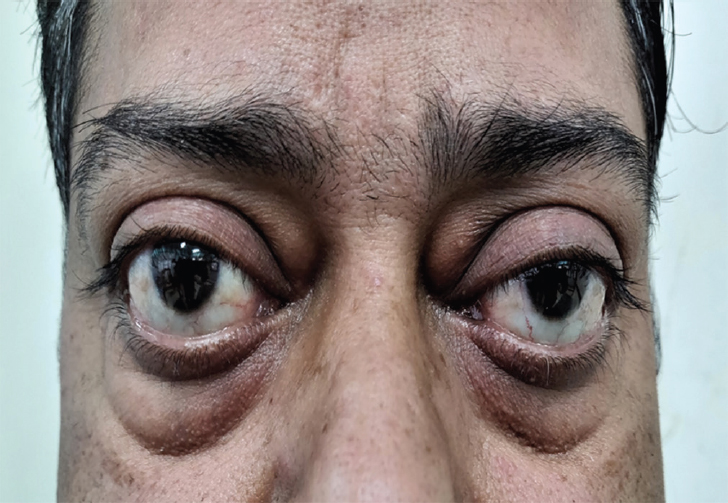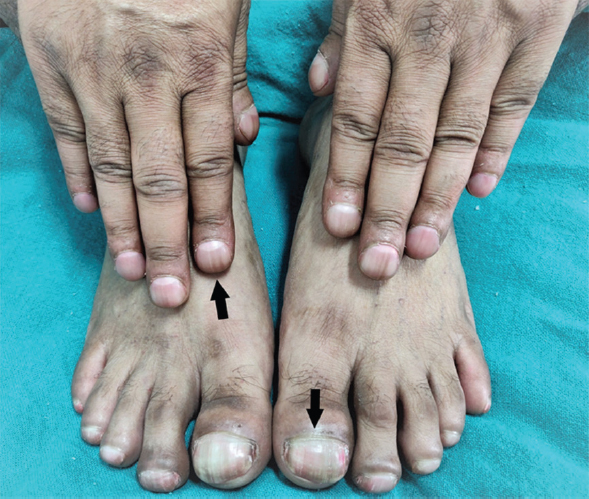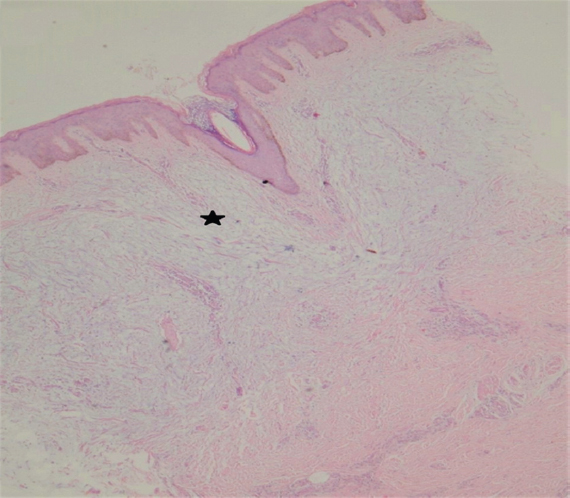Translate this page into:
Grave's disease: Classical triad & response to treatment
*For correspondence: archanasingal@hotmail.com
-
Received: ,
This is an open access journal, and articles are distributed under the terms of the Creative Commons Attribution-NonCommercial-ShareAlike 4.0 License, which allows others to remix, tweak, and build upon the work non-commercially, as long as appropriate credit is given and the new creations are licensed under the identical terms.
This article was originally published by Wolters Kluwer - Medknow and was migrated to Scientific Scholar after the change of Publisher.
A 44 yr old male†, presented to the department of Dermatology, Venereology & Sexually Transmitted Diseases, University College of Medical Sciences and Guru Teg Bahadur (UCMS & GTB) Hospital, Delhi, India, in February 2019, with symmetrical, brown plaques having peau-d' orange appearance bilaterally over the anterior aspect of lower legs (Fig. 1A). He also had exophthalmos (Fig. 2) and thyroid acropachy (Fig. 3). Laboratory tests showed high levels of anti-thyroid peroxidase antibodies (112 IU/ml) and thyroid profile indicative of Grave's disease. Histopathological (Fig. 4) examination of punch biopsy from the leg lesions, showed features consistent with pretibial myxoedema. The patient was started on oral propranolol and carbimazole. Pretibial lesions were treated with topical high potent corticosteroids under occlusion and intralesional corticosteroid injections (20 mg/ml) at four weekly intervals. At six months follow up there was a significant improvement in texture and appearance of the plaques (Fig. 1B). Grave's disease presents with a triad of exophthalmos, myxoedema and acropachy in <1% population. Pretibial myxedema is an infrequent manifestation of Grave's disease accounting for <5% of cases. The present case depicts Grave's disease with the classical triad of pretibial myxoedema, ophthalmopathy and thyroid acropachy managed successfully on medications and topical as well as intralesional steroids.

- (A) Symmetrical, brown plaques with peau-d' orange appearance over bilateral lower legs suggestive of pretibial myxoedema. (B) Post-treatment image showing a remarkable reduction in the thickness of the plaques and improvement in texture.

- Bilateral proptosis suggestive of thyroid ophthalmopathy.

- Pan digital clubbing (arrows) as a manifestation thyroid acropachy.

- Histopathology from the plaques on haematoxylin and eosin stain (×40) showing large deposits on mucin in the reticular dermis (*), separating collagen fibres.
Conflicts of Interest: None.





